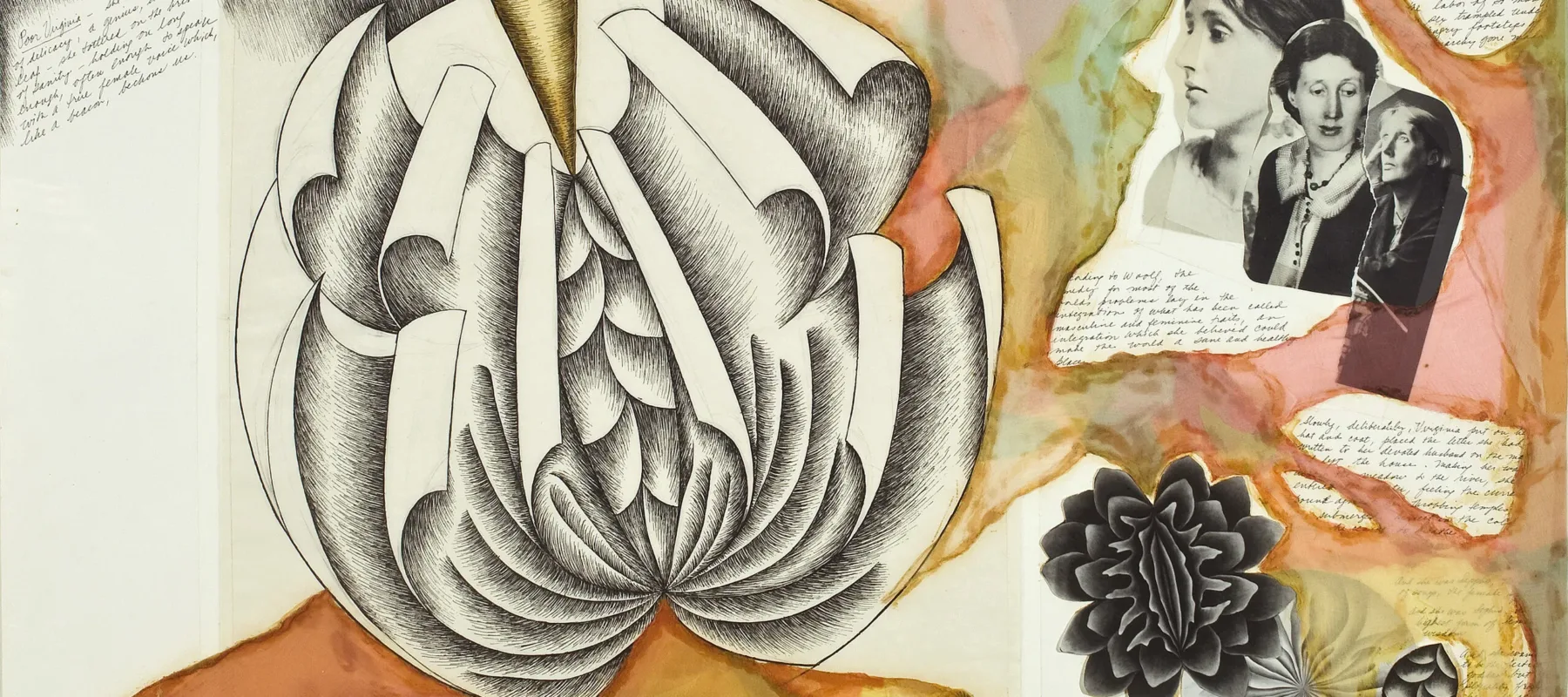WASHINGTON—The National Museum of Women in the Arts (NMWA) presents Judy Chicago: Circa ’75 , on view January 17–April 13, 2014. The exhibition features 13 paintings, drawings, sculptures and mixed media works by innovative feminist artist Judy Chicago (b. 1939). Throughout her career, Chicago has been creating art with the intention of influencing and changing societal norms. Her iconic body of work from the 1970s, including preparatory art for The Dinner Party, demonstrates her firm belief in the power of art to highlight women’s creativity and overcome traditional gender inequalities. This exhibition honors Chicago’s commitment to feminist ideals on the occasion of her 75th birthday.
“Judy Chicago has been a friend and ally to the National Museum of Women in the Arts since its opening in 1987,” said NMWA Director Susan Fisher Sterling. “Given Chicago’s commitment to honoring women, it is fitting that she be fêted at the sole museum in the world devoted to the creative contributions of women.”
Born Judy Cohen in Chicago, this pioneering feminist artist jettisoned her birth and married surnames in 1970, legally adopting the neutral “Chicago.” This act of independence ushered in a decade of artistic innovation and exploration. This exhibition examines a selection of her art that paralleled and influenced the U.S. feminist movement of the 1970s.
On view in Judy Chicago: Circa ’75 is a work from the “Pasadena Lifesavers” series of paintings from 1969–70, marking Chicago’s break with the often emotionally disconnected aesthetic of Minimalism. Seeking to convey what it was like to be a woman through abstracted forms, Chicago perfected the use of spray paint (usually associated with the masculine realm of auto-body work) on canvas, a medium that allowed her to create shapes that appear to turn, dissolve, pulse and vibrate, evoking emotional and physical sensations.
During this decade, Chicago also developed vivid, abstract “central core” imagery—constructing pictorial space from the center of the composition—seeking to create a new abstract visual vocabulary that she felt more adequately expressed a woman’s point of view. Along with this new imagery, Chicago wanted to reclaim forgotten women from the annals of history, literally making them visible through art.
Driven by her realization that “too much of women’s cultural production has been lost,” Chicago began researching women in history—artists as well as writers, scientists, women’s rights advocates and others. “My work is all about overcoming erasure and ensuring that women’s achievements become a permanent part of our cultural history,” said Chicago.
This mission would find its ultimate manifestation in The Dinner Party, completed in 1979. She created a series of artworks recognizing “Great Ladies” of the past, which culminated in the iconic installation, which is now housed permanently at the Elizabeth A. Sackler Center for Feminist Art at the Brooklyn Museum. “Great Ladies” works on view in Circa ’75 include preparatory drawings (Emily Dickinson and Virginia Woolf) and a test plate (Virginia Woolf) made for The Dinner Party.
Public Program
Artist Conversation: Judy Chicago and Jane Gerhard in Dialogue
Sunday, March 2, artist conversation 5–6 p.m.; book sale and signing 6–7 p.m.
Price: $10 general, $8 members, seniors and students.
Reservations required online at http://nmwa.org/mar-2-Chicago.
In conjunction with the exhibition Judy Chicago: Circa ’75 on view January 17–April 13, pioneer artist of the feminist movement Judy Chicago and historian and author Jane Gerhard will discuss their new books, Gerhard’s The Dinner Party: Judy Chicago and the Power of Popular Feminism, and Chicago’s Institutional Time: A Critique of Studio Art Education, in which she explores art education. Book signings and a 75th-birthday celebration for Chicago will follow.
National Museum for Women in the Arts
Founded in 1981 and opened in 1987, NMWA is the only museum solely dedicated to celebrating the achievements of women in the visual, performing and literary arts. The museum’s collection features 4,500 works from the 16th century to the present created by more than 1,000 artists, including Mary Cassatt, Frida Kahlo, Alma Thomas, Lee Krasner, Louise Bourgeois, Chakaia Booker and Nan Goldin, along with special collections of 18th-century silver tableware and botanical prints. NMWA is located at 1250 New York Avenue, NW, Washington, D.C., in a landmark building near the White House. It is open Monday–Saturday, 10 a.m.–5 p.m. and Sunday, noon–5 p.m. For information, call 202-783-5000 or visit www.nmwa.org. Admission is $10 for adults, $8 for visitors 65 and over and students, and free for NMWA Members and youths 18 and under. Free Community Days are on the first Sunday of the month. For more information about NMWA, visit www.nmwa.org, Broad Strokes Blog, Facebook or Twitter.
